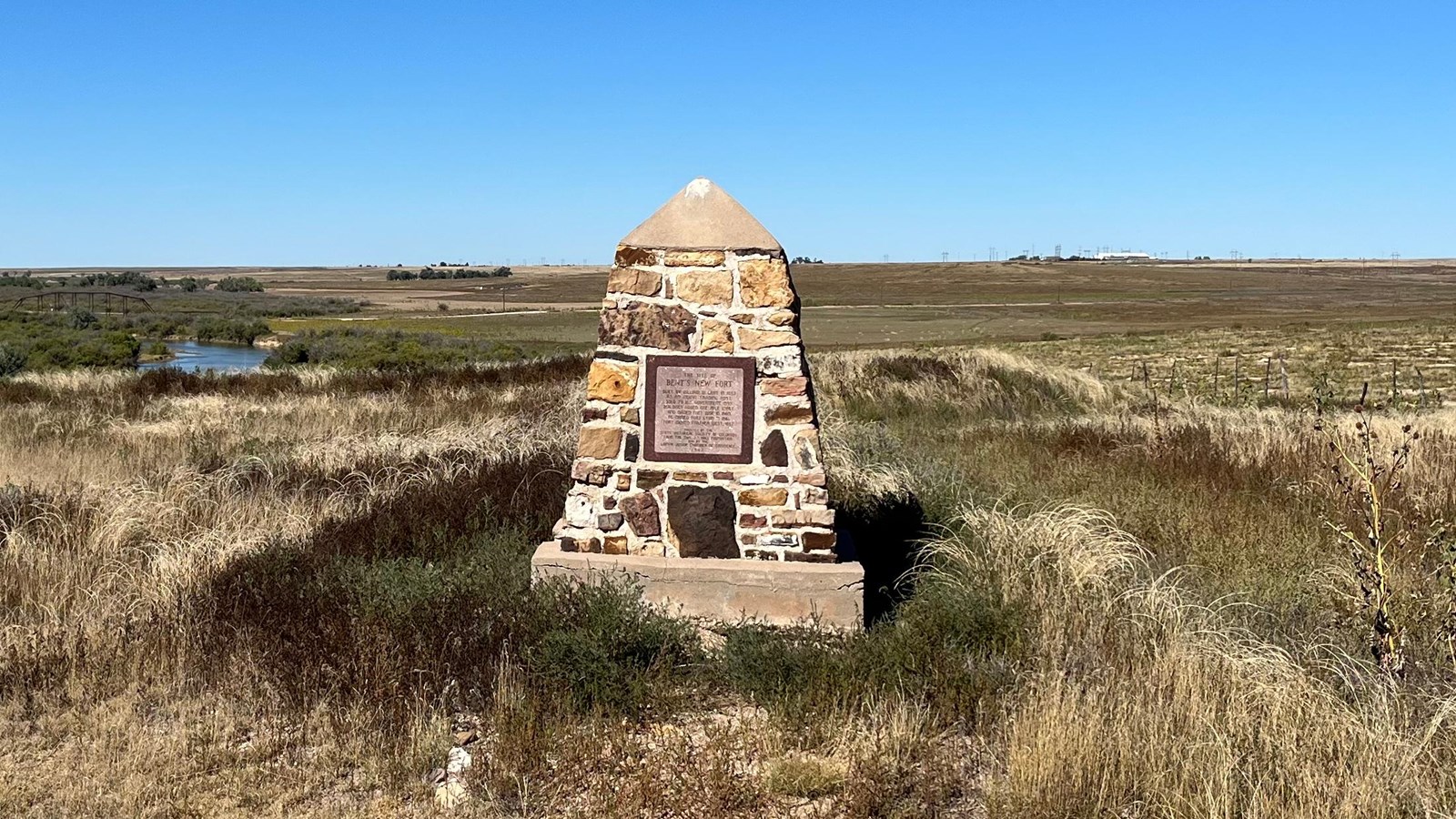Last updated: October 6, 2023
Place
Bent's New Fort and Fort Wise/Lyon

NPS Photo
Historical/Interpretive Information/Exhibits
Bent's New Fort connects the story of Bent's Old Fort and William Bent's family to the Sand Creek Massacre. The New Fort represented an attempt to continue trading with Plains Tribes following the end of the Mexican War. The operation was shortlived, and William Bent sold the structure to the United States Army, which located a military garrison there under a new name. Both of these forts played a role in the development of the Santa Fe Trail, the destinies of the Plains Indians, and the future of Colorado.
Bent’s New Fort (1853-1869)
William Bent abandoned his old fort (present-day Bent’s Old Fort National Historic Site) in 1849. Lacking satisfactory offers to purchase it, Bent is believed to have burnt much of the fort to keep it from falling into the hands of the Army or his competition. To continue his trade with the Plains Tribes, Bent built a new fort of stone in 1853. Based on Cheyenne recommendations, he located this new fort overlooking the Arkansas River at Big Timbers, near present-day Lamar.
The new fort had several advantages over the old fort, including its stone construction, simple rectangular design, and lack of adobe. Bent no longer needed to hire labor to apply adobe every season, and the durable nature of stone added to its protection. With trade no longer profitable and the construction of Fort Wise nearby in 1860, Bent leased his stone fort to the Army, which used it as a post quartermaster & commissary and Indian Agency office.
Fort Wise (1860)
Fort Wise was made possible through the 1851 Fort Laramie Treaty, which offered Plains Indians annuities and recognition of their land in exchange for allowing uncontested passage along the western trails and the establishment of forts. Named in honor of Virginia Governor Henry A. Wise, Fort Wise served to protect travelers and transportation along the Santa Fe Trail between Fort Larned in Kansas and Pueblo, Colorado.
The Army situated the fort on lands adjacent to the Arkansas River in 1860, just west of Bent’s New Fort. Fort Wise lacked a protective wall or barricade, instead locating numerous barracks and offices in a square around a central parade ground. With the outbreak of the Civil War in 1861, Governor Wise led Virginia’s secession from the United States. The U.S. Army renamed the military post Fort Lyon in mid-1862 to honor of General Nathaniel Lyon, the first United States general killed in the Civil War.
Fort Lyon (1860-1867)
Fort Lyon encompassed both the former Fort Wise and Bent’s New Fort, as both offered advantages to the Army. As a way station along the Santa Fe Trail, Fort Lyon served as a base for U.S. Army patrols and a rest stop for travelers. In 1864, Colonel Chivington used the fort and its troops for the attack on Sand Creek. He uttered his infamous outburst, “Damn any man who is in sympathy with Indians!” inside the quartermaster office of Bent’s New Fort.
Detachments of the 1st and 3rd Regiments Cavalry, Colorado (U.S.) Volunteers led by Colonel John Chivington marched overnight from Fort Lyon to reach a village of peaceful Cheyenne and Arapaho at Sand Creek at dawn on November 29, 1864. The 40 mile ride took about 10 hours and allowed the volunteers to attack the village with complete surprise. The attack resulted in the death of approximately 230 men, women and children.
Fort Lyon’s low position near the Arkansas River rendered it vulnerable to flooding and disease. A large flood in 1867 undercut many of the buildings. In June 1867, the U.S. Army leased land near Las Animas, Colorado, and transferred the post there, making the new military post the second to bear the name Fort Lyon. By William Bent’s death in 1869, the fort near Lamar lay abandoned and neglected, its stones later scavenged for use in local buildings.
The Site of Bent’s New Fort today
Because of its significance to trade along the Santa Fe Trail and its role in the Sand Creek Massacre, the National Park Service worked with the landowner and other partners to open the site of Bent’s New Fort to the public in 2013. This public-private partnership provides access to the site, where visitors can walk a short trail, read interpretive wayside exhibits, and gaze across the scenic Arkansas River Valley.
Driving Directions
To reach Bent’s New Fort Site, take U.S. 50 to County Road 35, approximately 10 miles west of Lamar or 25 miles east of Las Animas. Turn south on County Road 35 for one mile to County Road JJ (T Junction). Turn east (left) and drive ¼ mile, turning south (right) onto County Road 35.25 for ¼ mile to the Bent’s New Fort parking area. A walking trail and interpretive exhibits are available; however, no public facilities exist at the site.
